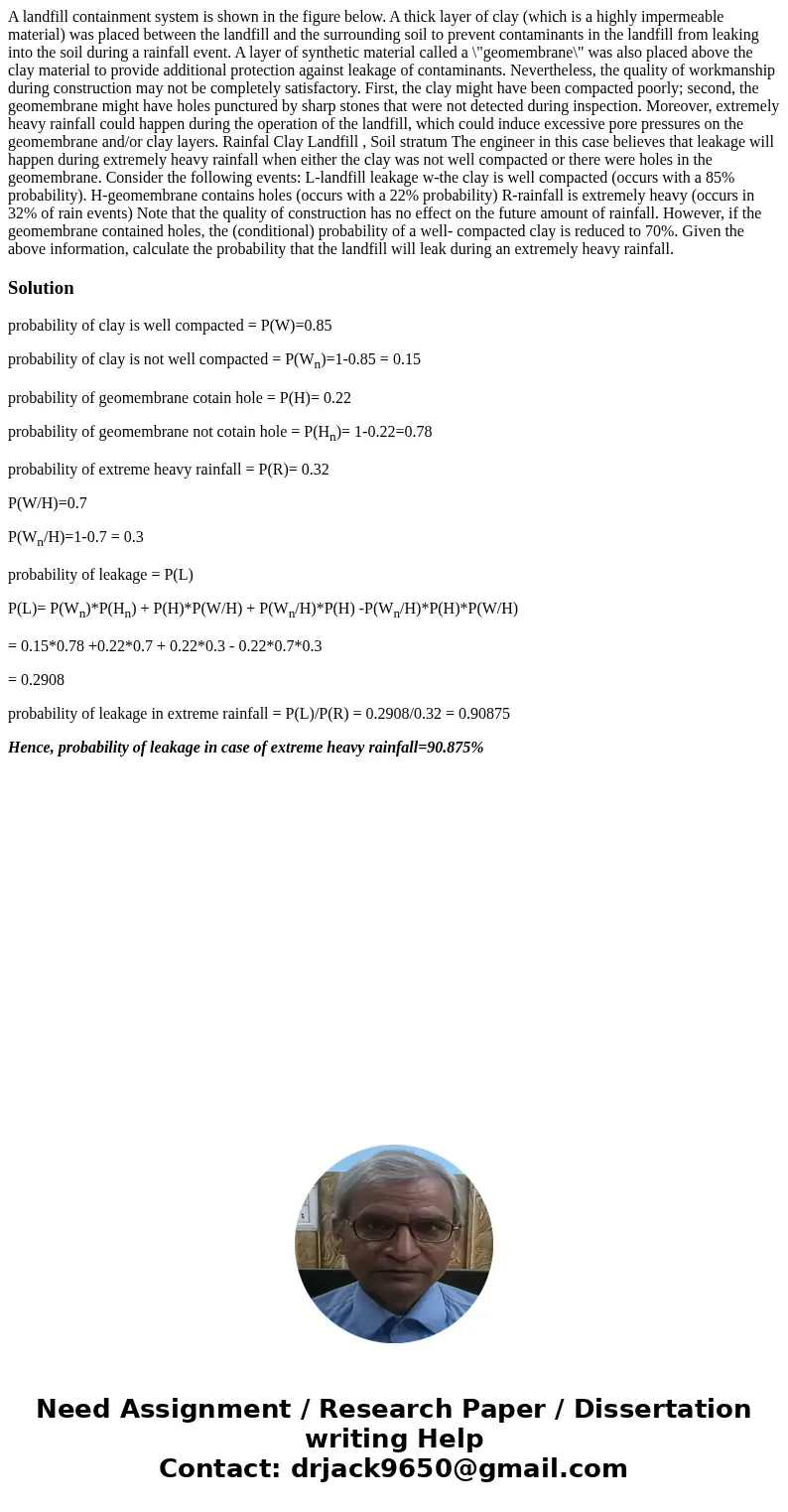A landfill containment system is shown in the figure below A
A landfill containment system is shown in the figure below. A thick layer of clay (which is a highly impermeable material) was placed between the landfill and the surrounding soil to prevent contaminants in the landfill from leaking into the soil during a rainfall event. A layer of synthetic material called a \"geomembrane\" was also placed above the clay material to provide additional protection against leakage of contaminants. Nevertheless, the quality of workmanship during construction may not be completely satisfactory. First, the clay might have been compacted poorly; second, the geomembrane might have holes punctured by sharp stones that were not detected during inspection. Moreover, extremely heavy rainfall could happen during the operation of the landfill, which could induce excessive pore pressures on the geomembrane and/or clay layers. Rainfal Clay Landfill , Soil stratum The engineer in this case believes that leakage will happen during extremely heavy rainfall when either the clay was not well compacted or there were holes in the geomembrane. Consider the following events: L-landfill leakage w-the clay is well compacted (occurs with a 85% probability). H-geomembrane contains holes (occurs with a 22% probability) R-rainfall is extremely heavy (occurs in 32% of rain events) Note that the quality of construction has no effect on the future amount of rainfall. However, if the geomembrane contained holes, the (conditional) probability of a well- compacted clay is reduced to 70%. Given the above information, calculate the probability that the landfill will leak during an extremely heavy rainfall. 
Solution
probability of clay is well compacted = P(W)=0.85
probability of clay is not well compacted = P(Wn)=1-0.85 = 0.15
probability of geomembrane cotain hole = P(H)= 0.22
probability of geomembrane not cotain hole = P(Hn)= 1-0.22=0.78
probability of extreme heavy rainfall = P(R)= 0.32
P(W/H)=0.7
P(Wn/H)=1-0.7 = 0.3
probability of leakage = P(L)
P(L)= P(Wn)*P(Hn) + P(H)*P(W/H) + P(Wn/H)*P(H) -P(Wn/H)*P(H)*P(W/H)
= 0.15*0.78 +0.22*0.7 + 0.22*0.3 - 0.22*0.7*0.3
= 0.2908
probability of leakage in extreme rainfall = P(L)/P(R) = 0.2908/0.32 = 0.90875
Hence, probability of leakage in case of extreme heavy rainfall=90.875%

 Homework Sourse
Homework Sourse